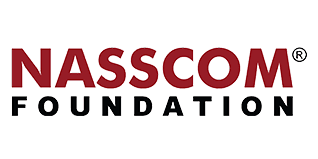Every entrepreneur starts with a dream — a vision to build digital products that fill gaps, change lives, or disrupt industries. But turning that idea into a working, scalable solution is a journey with many paths.
At OnGraph, we’ve worked with hundreds of founders and businesses at different stages — from early-stage idea validation to full-scale enterprise deployment. And one thing we’ve learned? There’s no “one-size-fits-all” approach to product development. But there are better ways to move forward, especially when the goal is clear.
Let’s explore the different approaches entrepreneurs can take to build digital solutions, the pros and cons of each, and how OnGraph steps in as a true technology partner — not just a vendor.
1. The “Ready-Made” or White-Label Product Approach
What it is:
You license or buy a pre-built solution and customize it slightly to fit your brand or use case.
Pros:
- Faster time to market
- Lower upfront cost
- Minimal technical involvement
Cons:
- Limited customization
- You adapt to the product, not the other way around
- It might not fit your exact vision
- Can feel generic to users
This option works well for entrepreneurs who want to quickly launch and test an MVP. However, the value it brings is often limited unless it is thoughtfully customized.
2. The “Custom-Built From Scratch” Route
What it is:
You work with a development team to build the entire platform tailored to your unique needs.
Pros:
- Maximum flexibility
- Aligns completely with your vision
- Ownership of code and IP
Cons:
- Longer time to market
- Higher upfront investment
- Needs ongoing collaboration and clarity
This route requires trust and transparency. Founders often approach us after negative experiences with other teams that made big promises but didn’t deliver. At OnGraph, we focus on milestone-based development, clear scope definition, and ongoing communication. You’re never left wondering what’s going on with your product.
3. The Hybrid Approach: Start with a Base, Build Your Unique Edge
What it is:
Use existing components, templates, or frameworks to accelerate development — but heavily customize the core experience.
Pros:
- Faster than building from scratch
- More tailored than white-label
- Balances speed, cost, and customization
Cons:
- Still needs a capable team
- Requires thoughtful planning to avoid feature creep
This is often the most practical path forward for entrepreneurs with a clear vision who also want to launch quickly. At OnGraph, we frequently propose this as a smart compromise between speed and depth.
When Fixed-Bid Projects Work — And When They Don’t
Many founders ask about fixed-cost projects. While this model can work well when requirements are clearly defined and locked, it can become problematic when:
- The product vision is still evolving
- New insights arise during development
- User feedback changes direction mid-way
In such cases, fixed-bid projects can lead to misunderstandings, delays, and budget overages. Instead, an agile, milestone-based approach with room for iteration is often more effective. It keeps the product aligned with the real-world needs of users and allows you to adapt as you learn.
If you’re unsure of every feature from day one, that’s okay. What’s important is to partner with a team that understands how to build with flexibility while keeping delivery on track.
Final Thought: Entrepreneurs Need More Than Just Coders
They need clarity, commitment, and a partner who listens deeply. One of our recent clients said it best:
“From now on, we move forward based on realism and mutual understanding — not just good intentions or optimism.”
At OnGraph, that’s exactly how we work.
Looking to bring your idea to life?
Let’s talk about how we can help you turn your vision into reality — on time, in scope, and within budget.
About the Author
Let’s Create Something Great Together!
Latest Blog
















